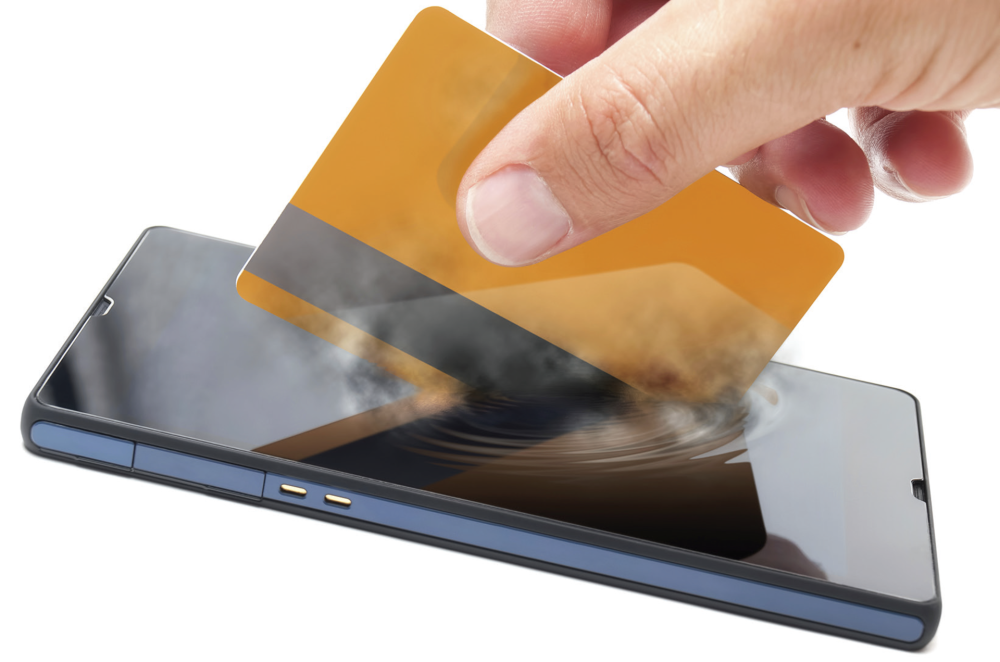Another reason for marketers to hone their mobile strategy? Retail m-commerce sales are expected to surge about 37% this year to about $58 billion—or roughly 20% of retail e-commerce sales, according to eMarketer.
In fact, m-commerce is changing the game for marketers by building a bridge between brick-and-mortar stores and online shopping, notes Cal Bouchard, director of e-commerce for outdoor clothing retailer The North Face.
That link allows marketers to connect with consumers anytime, anywhere, she says. “You have to be where your customers are and where they’re interacting with brands,” Bouchard says. “If you’re not on mobile, you’re missing out pretty significantly.”
Here are three m-commerce trends that are helping to fuse in-store and online shopping into one seamless experience.
Beacons
Beacons are Bluetooth-powered devices that communicate with shoppers’ smartphones while in-store or outside a store. They allow marketers to send relevant messages by using timely, geo-precise targeting. Beacons give marketers the opportunity to connect with consumers at the most opportune time, notes Michael Becker, North American market development and strategic advisor for mobile solutions company Somo.
The North Face is one brand currently integrating beacons into its marketing plans. The retailer sends push alerts—such as product introductions—to its app users who have opted in to receive them. These alerts drive significant traffic to its stores. Beacon alerts, Bouchard says, will allow The North Face to advance its engagement to the next level—particularly by sending alerts to geo-targeted customers near or at brick-and-mortar locations, rather than to all app users.
Why marketers should care: Beacons can be solid measurement tools for marketers, Becker says. These devices allow marketers to track incoming store traffic, measure engagement, and assess sales. But marketers must then use that information to communicate with consumers in a way that’s authentic to the brand, Bouchard says. “People are willing to give up their information if they’re going to get a relevant message back in return,” she says.
Mobile wallets
A mere 19% of consumers say they’ve received mobile wallet–specific offers from retailers, according to the 2013 Mobile Wallet Consumer Report from mobile marketing solutions provider Vibes. This may be a missed opportunity.
Mobile wallets—like Apple’s Passbook and Google Wallet—benefit consumers and marketers, notes Alex Campbell, cofounder and chief innovation officer of Vibes. Mobile wallets provide a paperless way for consumers not only to purchase, but also to store everything from boarding passes to loyalty cards. Marketers can set geo-fences for their mobile wallet content, Campbell notes, including reminding consumers of saved offers when they enter a store.
One success story is Starbucks’ Square Wallet, which enables mobile transactions and receipt management for its U.S. stores. According to Starbucks’s Fiscal 2013 Annual Report, U.S. customers make more than four million mobile transactions per week via Starbucks’s mobile payment apps.
Why marketers should care: In addition to driving loyalty, mobile wallets allow marketers to revise offers instantly. “If [an offer] expires, or you see it not working as you thought it would, [you] can now update that,” Campbell says.
In-store tablets
Consumers aren’t the only people retailers should consider when building mobile commerce strategies. Rick Chavie, chief solution officer of omnichannel commerce software provider hybris, says they should also think of their sales associates. Having in-store tablets, he says, enables sales staffers to view consumers’ online behavior, purchase histories, and wish lists.
Based on this data—as well as on information gleaned from in-store conversations—marketers can create targeted offers that associates can then present to customers in store, Chavie says.
Why marketers should care: Arming sales associates with tablets ensures that they have the same or more data than their highly informed customers. This enables associates to deliver an engaging, relevant customer experience and combat showrooming. For marketers who want to use tablets in-store to allow customers to self-serve, it’s important to make sure those devices enhance the customer experience, or those retailers may find that tablets are ignored in favor of speaking with an associate, notes Valerie Hoecke, Benefit Cosmetics’ SVP of digital.
“Digital has to supplement the…customer service experience that you have in your stores,” she says. “It’s not going to replace [it].”







